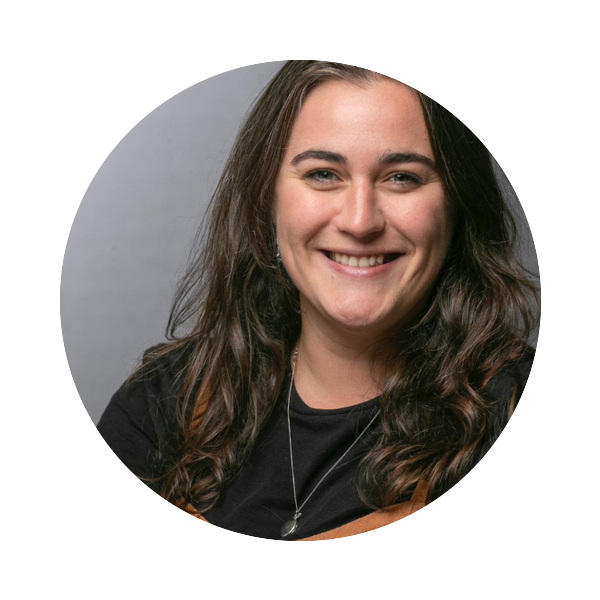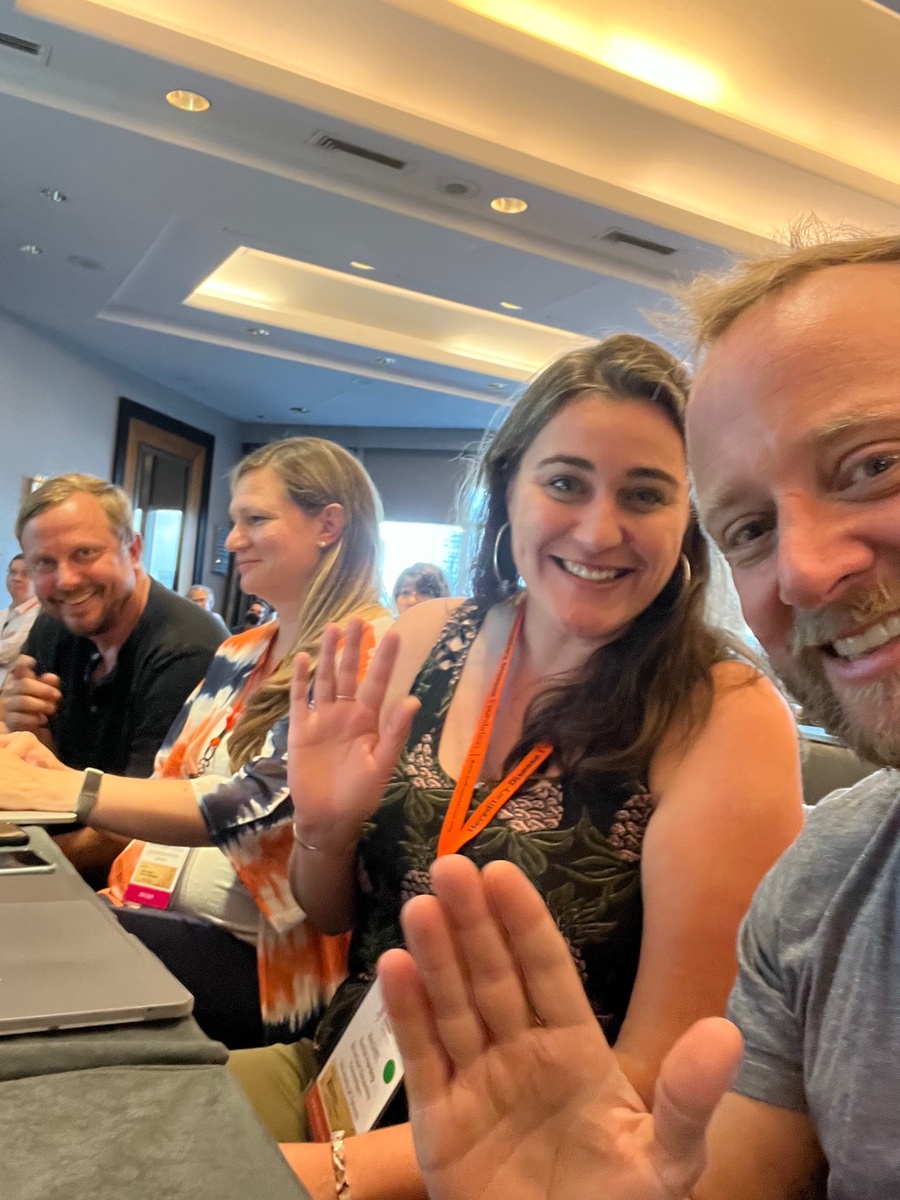Hereditary Disease Foundation (HDF) conference 2022 – Day 1
Read updates from clinical trials and scientific research on Huntington’s disease from Day 1 of the 2022 HDF Milton Wexler Biennial Symposium #HDF2022

 By Dr Rachel Harding and Dr Sarah Hernandez August 31, 2022 Edited by Dr Sarah Hernandez Originally published on August 30, 2022
By Dr Rachel Harding and Dr Sarah Hernandez August 31, 2022 Edited by Dr Sarah Hernandez Originally published on August 30, 2022
Hello and welcome from the HDBuzz team who are currently at the Hereditary Disease Foundation (@hdfcures) 2022 Milton Wexler Biennial Symposium in Boston! It’s the dawn of an exciting new era for HDBuzz. Due to our new partnership with @hdfcures, we are now able to live tweet many of the talks from this meeting which was previously closed to social media.
Huntington’s disease orientation
Two talks will kick off the meeting tonight, discussing when to treat HD and understanding treatment effects of the huntingtin-lowering drug, tominersen.

The ideal time to treat HD
The first talk of the meeting is from Sarah Tabrizi from UCL. Sarah will be talking to us about when it might be best to treat people with HD. Sarah begins her talk by reminding us that we can test for HD with a genetic test, long before we might see signs and symptoms of the disease in patients.
Thanks to many studies that HD families have participated in, like PREDICT-HD and ENROLL-HD, we know a lot about the timing of when HD begins. The HD Young Adult Study (HD-YAS) aimed to establish when biomarkers of HD first become detectable in participants who had a positive test for HD but many decades away from having symptoms. HDBuzz wrote about HD-YAS when it was first published by Dr. Tabrizi’s lab group.
Lots of different measurements were taken from all of the participants in this study including many types of brain scans and imaging. The scientists in the study looked at how these different measurements changed with participant age, CAG number, and other factors.
Many of the measurements, including thinking and psychiatric testing, showed no difference between the participants without HD and those with the HD gene expansion. Out of 8 brain regions, only a part of the brain most affected by HD (called the putamen) was slightly smaller in the group with HD compared to the controls.
Interestingly, the levels of a biomarker called NfL (neurofilament light), were significantly increased in the HD group compared to controls. However, the levels were still very low, indicating that there was probably not much neurodegeneration yet. Many other biomarkers from spinal fluid were assessed (about a dozen!), and only NfL levels indicated there was a change in people with and without HD.
Overall, this is great news. People born with the HD gene expansion have brains and biomarkers which are indistinguishable from people without HD. Even 24 years from predicted onset of symptoms, there were no obvious changes in thinking, in the size of most brain regions, and in many biomarkers.
BUT there were detectable changes in NfL levels, which means researchers do have a biomarker they can look at during the very beginning stages of HD, before obvious symptoms appear. This very subtle detectable change associated with HD may indicate the best time to treat to prevent loss of brain cells - people with HD are completely healthy by almost every measure, but there’s a biomarker (NfL) that allows researchers to determine if they could get better.
“This very subtle detectable change associated with HD may indicate the best time to treat to prevent loss of brain cells - people with HD are completely healthy by almost every measure, but there’s a biomarker (NfL) that allows researchers to determine if they could get better. ”
Next Dr. Tabrizi talked about using the HD Integrated Staging System (HD-ISS) to streamline recruitment for clinical trials which we wrote about a few months ago.
The HD-ISS stages people with HD from 0 to 4, much like the way the cancer field stages patients. This new system will allow HD researchers and clinicians to compare results between trials. Importantly, it is hoped that this new system will help HD researchers conduct clinical trials in patients at much earlier stages of the disease.
People with HD won’t need to know their stage and it won’t influence day-to-day life with HD or care. It will only be used behind the scenes for organizing clinical trials.
The scientists who came up with this new system did a large-scale systematic assessment of the different landmarks which could be measured to indicate disease stage. Over 20,000 data points were analyzed! This created a very robust, objective dataset from which the HD-ISS was created. For a person with a particular CAG number, scientists can predict how HD signs and symptoms might progress over that person’s lifetime.
Currently, trials have been done in people with later stages of HD. The HD-ISS staging system sets up a framework that can be used to recruit trials designed for people before they have symptoms of HD. While we’re not quite ready for trials in people with the earliest stages of HD, some HD patients are eager to see this happen and the HD-ISS sets up the system to allow this.
Sarah rightly highlights that this work was only made possible by HD research participants and families who contributed to the many studies which informed the design of the HD-ISS.
Update from Roche on the tominersen trial and moving forward
Next up is Peter McColgan from Roche. Peter will be talking to us about the huntingtin-lowering drug, tominersen, the trial of which was halted early last year.

Peter is going to tell us about some of the additional analyses Roche have done regarding the findings from the halted GENERATION-HD1 trial. He rightly thanks the commitment and dedication of HD families who participated in the trial. Without them, we wouldn’t have data or knowledge from one of the first HTT lowering trials.
In this Phase III trial, participants were either dosed with 120mg tominersen every 8 weeks or every 16 weeks or were given a placebo. Although the drug lowered the levels of the huntingtin protein, patients did not get better. In fact, on some measures, patients who received the drug had worse outcomes than placebo.
Over the course of the treatment, levels of NfL did not change that much but alarmingly the changes in volume to a part of the brain called the ventricles were worse in participants who received the drug compared to placebo.
Now Peter will cover new data from the trial! Roche is interested in understanding the mechanism behind what happened. One question they’re interested in exploring is if they can maintain reduction of HTT while avoiding some of the negative effects they observed.
Peter shows new data from Roche which suggests there is a correlation in the amount of tominersen drug in the CSF and the lowering of HTT levels in the CSF. However, it seems that there is no correlation between the changes in CSF HTT levels and clinical measures.
Next Peter detailed data that looked at increases in CSF NfL they saw with tominersen dosing. They found there was no relationship. Remember that NfL levels go up with damage to brain cells. So if it’s not tominersen, what is driving the early spike in CSF NfL?
The scientists at Roche looked at exposure to the drug i.e. how much drug is actually in the CSF, and the levels of NfL they observed in the early spike. Highest levels of exposure to tominersen had the biggest NfL spike and the largest amount of HTT lowering.
Next they looked to see if increases in volume of the ventricles influenced the clinical outcomes. They found there was no relationship. However the scientists wanted to try and work out why this brain volume measurement changed more in patients who received the drug.
“In the younger patients in the trial with a lower CAG number, Roche believe that there is some hope for tominersen and perhaps there was some clinical benefit. … Roche is using this analysis to guide the design of the new study, which they’re using to target people with HD with symptoms that are less advanced and those that have lower CAG repeat sizes. ”
Increase in the volume of the ventricles correlates with an increase in the amount of immune cells, like white blood cells called leukocytes. Interestingly there is no change in overall brain volume, even though the ventricle volume is increasing. Peter suggests this means there is no brain atrophy in these patients.
Based on the data Roche currently have, they’re unable to tease out the effects that are coming from “on-target” and “off-target” effects of tominersen - meaning effects they want and expect from the drug vs those that they don’t. What they do know is that some of the negative changes that they see related to increased size of the ventricles is likely due to inflammation in the brain.
Now Peter moves on to the “post hoc analysis” - the analysis of the data that was done after the trial was over that split people treated with tominersen into different groups to see if the drug had a positive effect on some. It’s important to note that a post hoc analysis tries to ask questions of the data collected in the trial which it was not designed to do - so all of this is to be taken with a pinch of salt
In the younger patients in the trial with a lower CAG number, Roche believe that there is some hope for tominersen and perhaps there was some clinical benefit. Note that these findings are NOT statistically significant. Roche is using this analysis to guide the design of the new study, which they’re using to target people with HD with symptoms that are less advanced and those that have lower CAG repeat sizes.
This new Phase 2 study will also test a lower dose of tominersen to “explore the full therapeutic range of tominersen”. Since they already have data on the effects of higher doses, this lower dose will fill in a gap in their data. They plan to only give participants the drug every 16 weeks and will be using lower doses of 100 mg and 60 mg. From the GENERATION-HD1 trial, Roche knows that dosing every 16 weeks was well tolerated in the patient sub group that they’re targeting in the new trial i.e. younger folks with less severe symptoms of HD.
Overall, Roche feels their data support further exploration of tominersen as a therapeutic for HD. While the road to get to this conclusion had disappointment, Roche believes the data suggests there is hope and supports additional trials for tominersen.
That’s a wrap for the kick-off session of the meeting. We’ll be back tomorrow morning for interesting updates on various clinical trials. Stay tuned!
To learn more about the Heredtiary Disease Foundation, visit their website. To learn more about the science discussed at #HDF2022, tune into a live webinar on September 15th at noon EST! Register here. You can also follow HDF on Facebook, Instagram, and Twitter to ensure you don’t miss future webinar updates.


